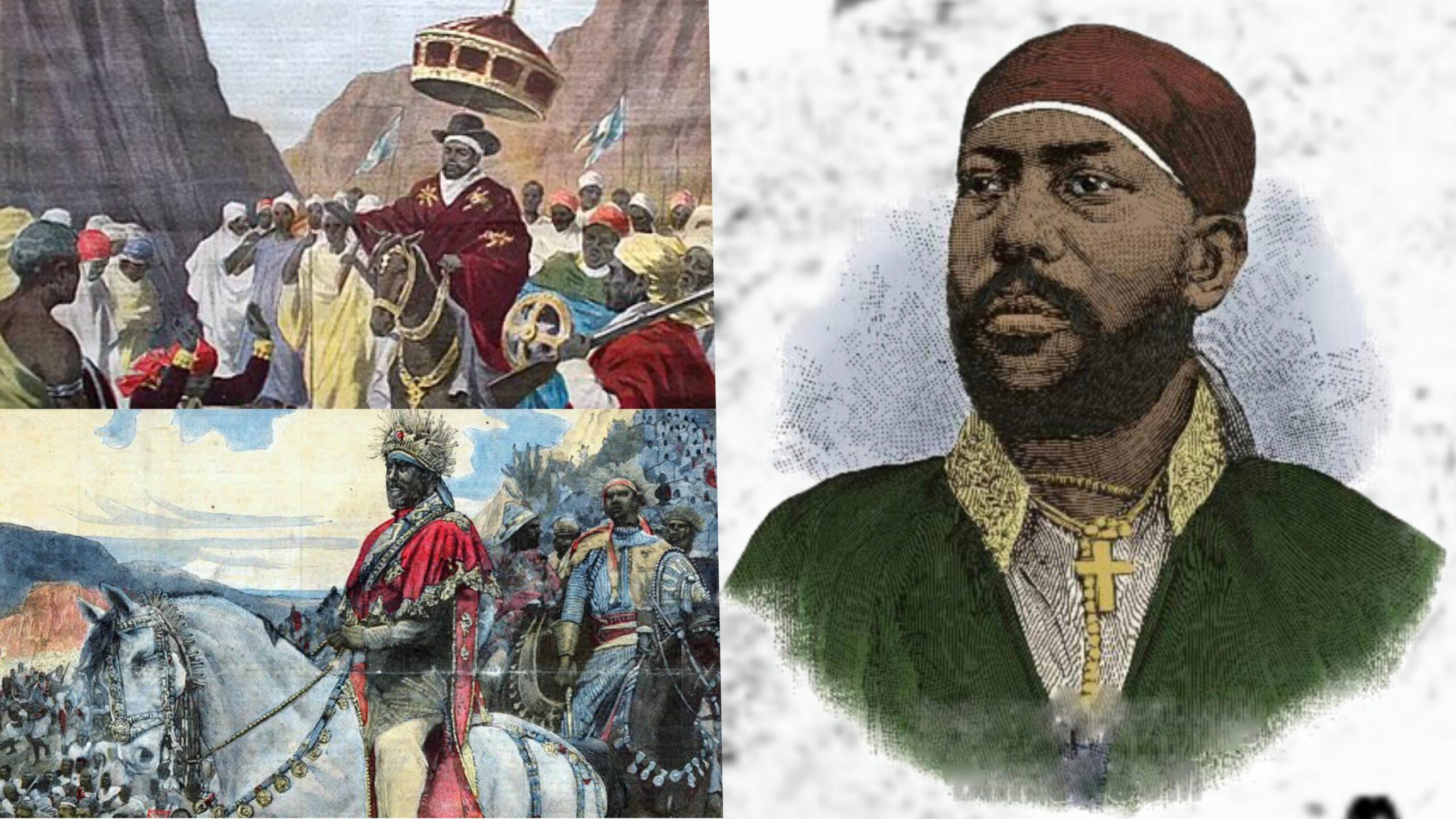Emperor Menelik II was one of Ethiopia’s most illustrious rulers, reigning as King of Shewa from 1866 to 1889 and as King and Emperor of Ethiopia from 1889 until his death in 1913. On August 17, 1884, in Ankober, Shewa, Ethiopia, he was born Sahle Miriam.
Woizero Ejigayehu Lemma Adyamo, his mother, was a palace servant, and his father was Prince Haile-Melekot, the son of King Sahle Sillasse.
By 1898, he had reached the peak of his internal and external power and prestige, and the process of territorial expansion and the formation of the modern empire-state had been completed.
Many Ethiopians honor him and celebrate him for the Battloe of Adwa, which is commemorated on March 1 or 2 across Ethiopia and the diaspora. During the Scramble for Africa, many Pan-Africans saw him as an advocate for African independence against European powers, not only that but the Emperor also transformed the Ethiopian Empire.
Melekot was killed during an invasion by Emperor Tewodros II in 1855, and Miriam was taken prisoner and held captive for ten years in the emperor’s mountain stronghold of Amba Magdela.
He was raised as a prince alongside the Emperor’s children. Miriam escaped from Magdela and returned to Shewa in 1865. Miriam was said to be six feet tall, with a dark complexion, smallpox marks on his face, and fine white teeth.
When Miriam returned, Ato Bezebeh, the region’s governor appointed by Emperor Tewodros II, fled, and Miriam became Negus (King) of the region.
When Emperor Tewodros II died in 1868, Miriam wanted to succeed him, but was forced to submit to Tekle Giorgis (1868–1872) and Yohannes IV (1872–1889).
Meanwhile, Miriam began to incorporate several southern Ethiopian kingdoms and states into his reign, and by the time Yohannes IV died in 1889, Miriam had become Ethiopia’s most powerful ruler, both King and Emperor.
…
When Miriam was coronated on November 3, 1889, he took the name Emperor Menelik II. His ancestors had ruled Menz, Shewa’s heartland, since the 17th century, and it has been claimed that they were related to the Solomonid line of emperors who ruled Ethiopia from 1268 to 1854.
Menelik II was a significant crown name because Menelik I was the legendary son of Solomon and Makeda, Queen of Sheba. Menelik II pushed Ethiopia almost to its current borders.
Italians had settled along the Red Sea coast, establishing a colony in Eritrea, just as Menelik II was crowned. Ethiopia and Italy initially reached an agreement, the Treaty of Wichale, but the Italian interpretation of the agreement granted Italy a protectorate over Ethiopia.
When Menelik II learned of this, he renounced the treaty, sparking several skirmishes and a major battle at Adwa. On March 1, 1896, the Italian army was defeated in the Battle of Adwa. The Italians retreated after the treaty was canceled.
“Italy can have Ethiopia when I am the emperor of Rome” -Emperor Menilek II
Menelik II began large-scale modernization, including the restoration of a national currency, the construction of buildings for improved educational facilities and ministries, the construction of a railway from Djibouti to the new capital of Addis Ababa, and the establishment of the Empire’s first telephone and telegraph systems.
Menelik II fell gravely ill sometime in 1906. On October 25, 1909, he suffered a massive paralytic stroke, ceding power to his wife, Empress Taytu. Menelik II married three times: Altash Tewodros (1864-1865), Befana Gatchew (1865-1882), and Taytu Betul (1865-1882). (1883-1913).
He had no children with his wives, but several with other women. Emperor Menelik II died on December 12, 1913, in Addis Ababa, Ethiopia, at the age of 69. Haile Selassie, Ethiopia’s next major leader, was not crowned until 1930.
 The African History Truly African
The African History Truly African

